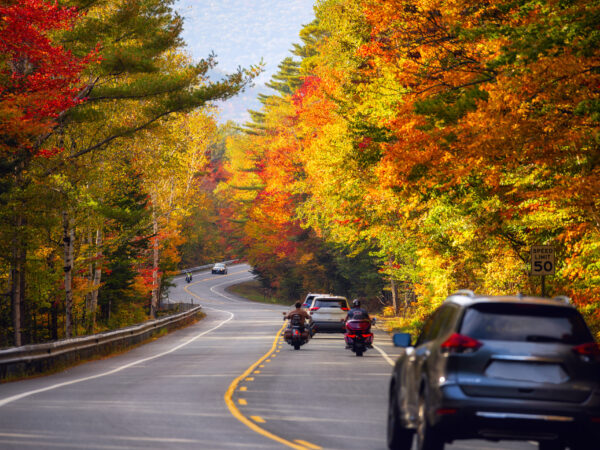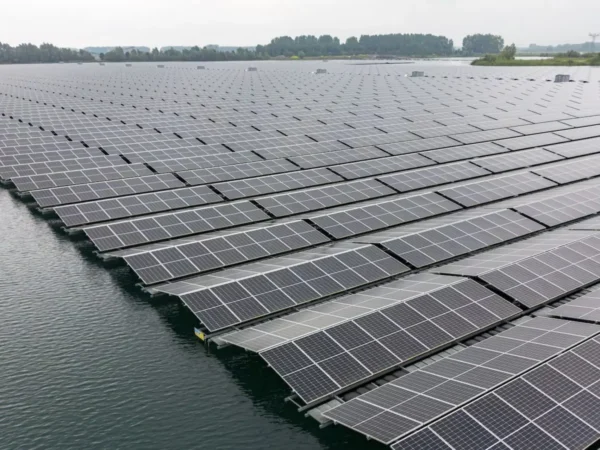
Points North is a biweekly podcast hosted by Daniel Wanschura and Morgan Springer about the land, water and inhabitants of the Upper Great Lakes.
This episode was shared here with permission from Interlochen Public Radio.
In 2007, helicopters were circling over a few rivers and streams in Minnesota near Lake Superior. They were looking for beaver dams. The Minnesota Department of Natural Resources had just come up with a new plan: to get rid of as many beavers and their dams as possible.
They hired trappers to catch and kill beavers. One of the guys they hired was Dan Croke, a trapping legend in the state. And he says state official’s instructions to him were simple.
“Kill them all,” Croke remembers them saying.
They were killing beavers to help fish, particularly steelhead trout. And they’re still doing it today. But some people are not on board with that. This episode is all about that conflict, and about how our scientific understanding of the role of beavers may be changing.
Credits
Producer: Joe Friedrichs, WTIP North Shore Community Radio
Host: Dan Wanschura
Editor: Morgan Springer
Additional Editing: Ed Ronco
Music: You’ll Have a Plan Before You Try to Get Your Horse on the Trailer by Aldous Ichnite | House by Johnny Ripper | Hiver Fou and O Solo De Maqui by Portron Portron Lopez | Nesco Gloss by Laxy Salon | Zion by Salmon Like The Fish
Transcript
DAN WANSCHURA, HOST: It’s 2007. Minnesota officials have just come out with a new plan for beavers. The plan – to get rid of as many beavers and their dams as possible, especially on a few rivers and streams near Lake Superior. They fly helicopters to find exactly where the beavers live, then they hire trappers to catch and kill beavers.
One of the guys they hire is Dan Croke, a trapping legend in Minnesota.
DAN CROKE: I’m 75 now, and I started trapping them when I was probably 10 years old.
WANSCHURA: He’s trapped thousands of animals near Duluth, Minnesota: beaver, mink, otter, fox. The state’s instructions to Croke for this job were simple.
CROKE: ‘Kill them all,’ she says.

A chewed tree trunk near the Knife River near Two Harbors, MN is a sure sign of beavers. (credit: Joe Friedrichs / WTIP Two Harbors Community Radio)
WANSCHURA: This is Points North, a podcast about the land, water, and inhabitants of the Great Lakes. I’m Dan Wanschura.
Simply put, they’re killing beavers to help fish, particularly steelhead trout. But some people are not on board with that. Today’s episode is all about that conflict and about how our scientific understanding of the role of beavers may be changing.
Joe Friedrichs from WTIP, North Shore Community Radio has the story.
JOE FRIEDRICHS, BYLINE: People love fishing for steelhead, in part, because they’re tough to catch.
DAVE OLSON: They’re one of the harder fighting fish in the river. They’re– when they first come in, they’re bright silver, and they’re strong and they’re fast and they jump and they take long runs. The excitement of hooking a steelhead, for me, is second to none.
FRIEDRICHS: Dave Olson started fishing for steelhead when he was a kid.

Steelhead are rainbow trout that migrate. They leave the river where they’re born, swim out to a bigger body of water, and then come back to the river to spawn. (credit: Minnesota DNR)
FRIEDRICHS: You remember catching your first steelhead?
OLSON: I do yes, I was nine years old. And as soon as I caught that first steelhead, I knew that this was something that I was going to do for a long time.
FRIEDRICHS: You landed it, you got it in?
OLSON: I did. The first steelhead I got I still remember it like it was yesterday. It took off up river and then down river and jumped and after a lengthy battle I was able to get it in. And I just was just in awe of the strength and power and overall beauty of the fish.

Dave Olson fishes the Knife River, near Two Harbors, MN on April 29. The river was swollen from recent rain and snow runoff. (credit: Joe Friedrichs / WTIP Two Harbors Community Radio)
FRIEDRICHS: Today, Olson is fishing for steelhead on the Knife River on the North Shore of Lake Superior. It’s a prime spot to catch the fish in Minnesota, and it’s at the heart of the conflict between beavers and steelhead trout.
Olson moves to the edge of the Knife, in an area with a slower current, to take a cast. It’s a cloudy day, and the fish aren’t biting. Olson says that’s probably because recent rains have the Knife River swollen to its banks.
Steelhead are rainbow trout that migrate. They leave the river where they’re born, swim out to a bigger body of water, and then come back to the river to spawn.
DESERAE HENDRICKSON: Those fish need to be able to access those inland waters where their spawning habitats are.
FRIEDRICHS: Deserae Hendrickson is with the Minnesota Department of Natural Resources.
HENDRICKSON: And so beaver dams can often block those fish from accessing those areas that they need to get to.
FRIEDRICHS: On top of that, she says, beaver dams can make the water warmer, which isn’t great for cold water loving fish like steelhead.
The Knife River Watershed is ground zero in Minnesota. It’s where a lot of steelhead spawn. It’s also where a lot of beavers build dams.
And it’s not just steelhead that are blocked, Hendrickson says, it’s other fish too.
Hendrickson is the regional fisheries manager out of Duluth. So, it’s her job to help the fisheries thrive, which in this case, means killing beavers and removing dams.
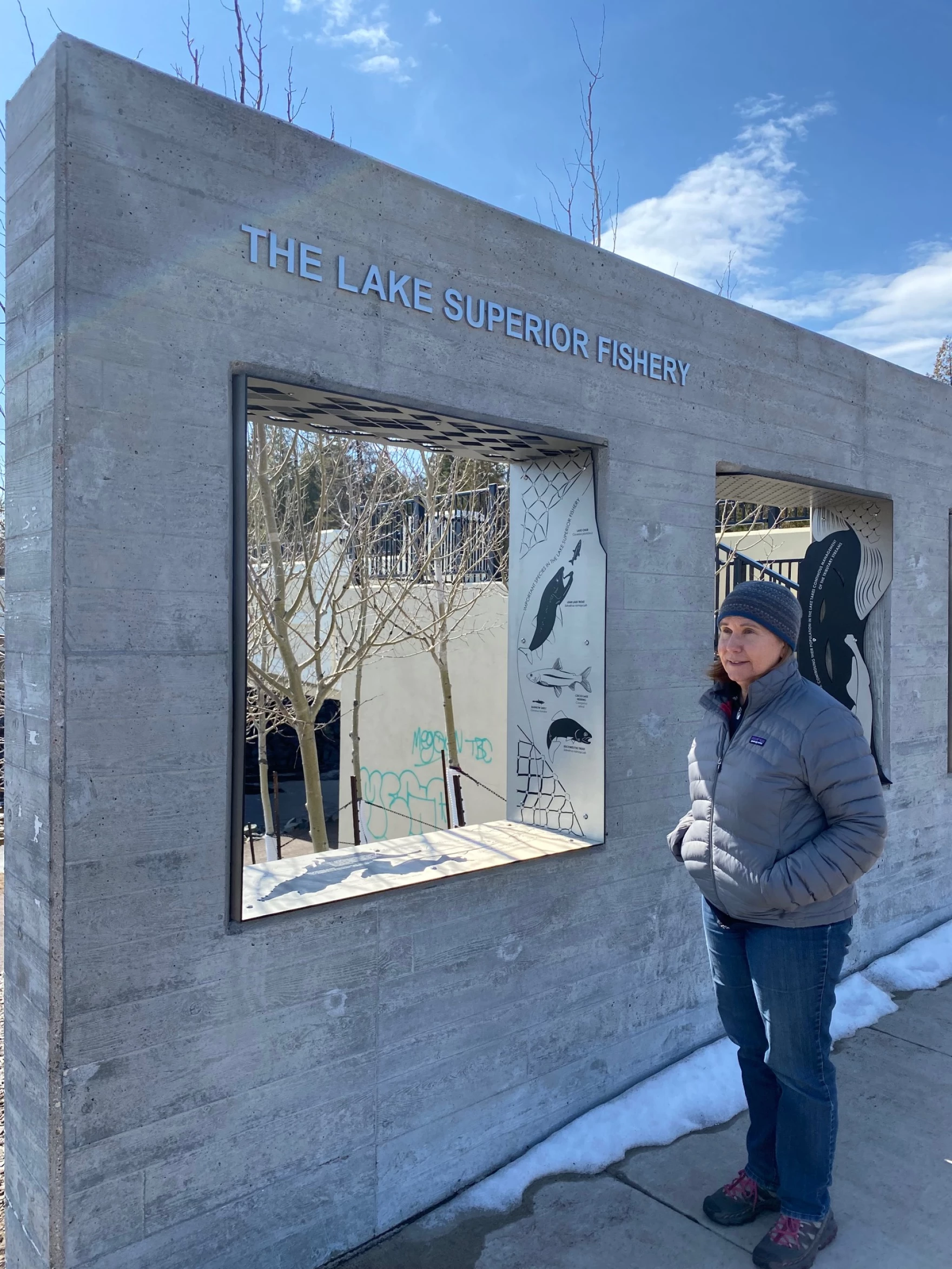
The Minnesota DNR’s Deserae Hendrickson stands near the French River, a tributary that flows into Lake Superior near Duluth. (credit: Ann Ward)
It happens in other Great Lakes states too, including in Wisconsin and Michigan, according to the U.S. Department of Agriculture Wildlife Services.
It’s not a new practice. People have been trapping beavers across the Great Lakes for centuries for different reasons. First, Native Americans trapped beavers in the region, using their fur and meat.
Then the large rodents were all the rage during the 17th century fur trade. Records from the Minnesota Historical Society show they were a major driver of the regional economy before logging and mining became commonplace. During this time, beavers were almost trapped to extinction.
But as the price of pelts declined over the years and tree regrowth provided more food, the population of beavers slowly recovered. And as beavers repopulated the landscape, there were more conflicts between beavers and people, including steelhead anglers.
The Minnesota DNR started managing beavers in the 50s and 60s, Hendrickson says.
But the state agency started aggressive trapping and removing dams in 2007. This was part of an ongoing effort to help the steelhead population rebound. Anglers and people within the DNR thought removing dams would help the fish numbers improve, says Hendrickson. Plus, she says groups like the Lake Superior Steelhead Association and Trout Unlimited were putting pressure on the DNR.
The state listened to them, in part, because the steelhead fishery brings in money. Fishing in general is a 4.4 billion dollar industry in Minnesota, according to state officials. It’s a big industry all across the Great Lakes. Great Lakes Fishery Commission says it brings in more than $7 billion annually.
So in 2007, the Minnesota DNR introduced a plan to remove as many beavers as possible from the Knife River Watershed and a few other rivers and streams.
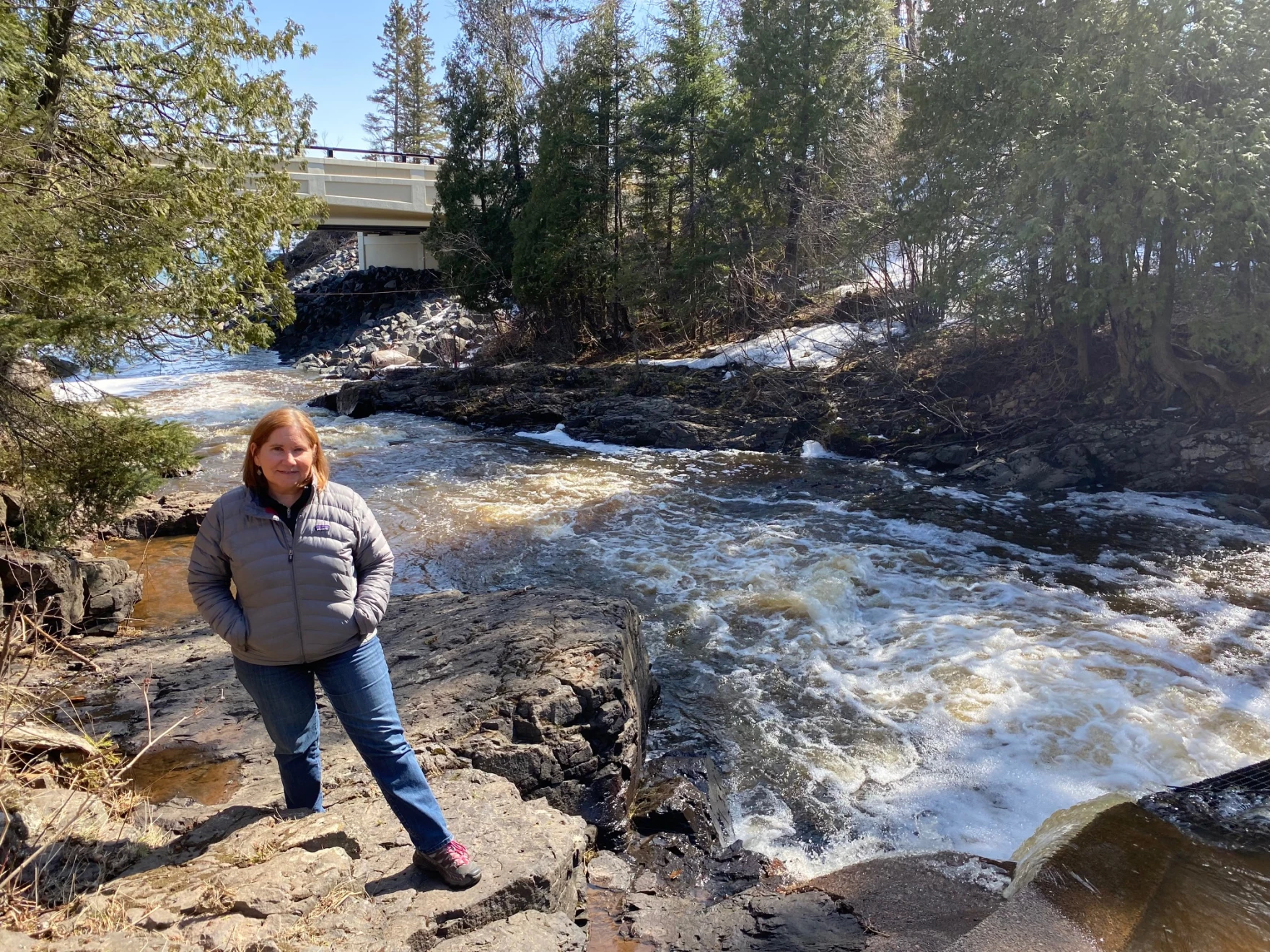
The Minnesota DNR’s Deserae Hendrickson stands near the French River, a tributary that flows into Lake Superior near Duluth. (credit: Ann Ward)
HENDRICKSON: I mean, ideally, if we could eliminate the majority of beaver in the entire watershed, we would have a lot less maintenance trapping to do.
FRIEDRICHS: Hendrickson says they’d send out a helicopter to do an aerial survey and figure out where the beavers were, and then they’d get to work. Sometimes that meant removing dams by hand and other times it meant blowing them up.
HENDRICKSON: There are occasionally very large dams that form and those typically we have to remove with explosives.
FRIEDRICHS: Trappers would come in to kill the beavers – trappers like Dan Croke – who you heard at the beginning of the episode.
CROKE: Deserae told me she’s responsible to the Steelhead Association. We had a meeting down at the hatchery, and we’re getting our plans set up for the fall eradication program. And she gave me a two-page spreadsheet with one map and then a list of all the dams and she said, ‘Go kill them all.’
FRIEDRICHS: Croke says he trapped and killed the high priority beavers in the state that fall.
CROKE: And then that was it. I stopped working for the feds and the DNR. It just didn’t make any sense. ‘Kill them all,’ she says.
FRIEDRICHS: Croke’s obviously not opposed to killing beavers. He’s been trapping for about 65 years. He’s in the Minnesota Trappers Association’s Hall of Fame. But in order to have more beavers to trap next year, you need to leave some alive.
CROKE: I want a viable population of furbearers and trout.
FRIEDRICHS: Deserae Hendrickson with the DNR says Croke is right about what their goal was back in the early 2000s. They didn’t want to leave many beavers behind.
HENDRICKSON: And so back then, we did decide to attempt to see if…we could get the numbers down to a point where we were not having to spend as much money.
FRIEDRICHS: Money to trap and kill beavers and remove dams year after year. But she says they never got even close to removing all the beavers from the Knife River Watershed or other rivers and streams.
On the Knife River, the DNR says on average 27 beavers and just over 18 dams are removed per year. Hundreds of dams have been removed in Michigan and Wisconsin over a few year time period, according to USDA Wildlife Services.
Around the same time Dan Croke stopped trapping for the DNR, some other people started speaking up, mainly residents near the Knife River and the trappers association. They held public events, calling on the DNR to change its approach and remove fewer beavers and dams.
In 2009, the DNR did just that. In their new management approach, they would keep taking beavers from the main stem of the Knife River, but they’d leave them in many of the tributaries and upper parts of the river, says Deserae Hendrickson.
HENDRICKSON: In the end, we came to a compromise, that is the point at which we have been operating from for the last close to 15 years. But pretty much no one is happy with that compromise. And certainly, fiscally, it’s a burden on us.
FRIEDRICHS: Kevin Bovee says he and his group of likeminded anglers once believed the only good beaver was a dead beaver. He’s the secretary of the Lake Superior Steelhead Association. These days, he says there can be room for both steelhead and beavers on the Knife River, so long as beaver dams aren’t getting in the way.
KEVIN BOVEE: We don’t advocate that every single beaver should be killed. It’s the ones that block access, are the ones that cause us a little angst.
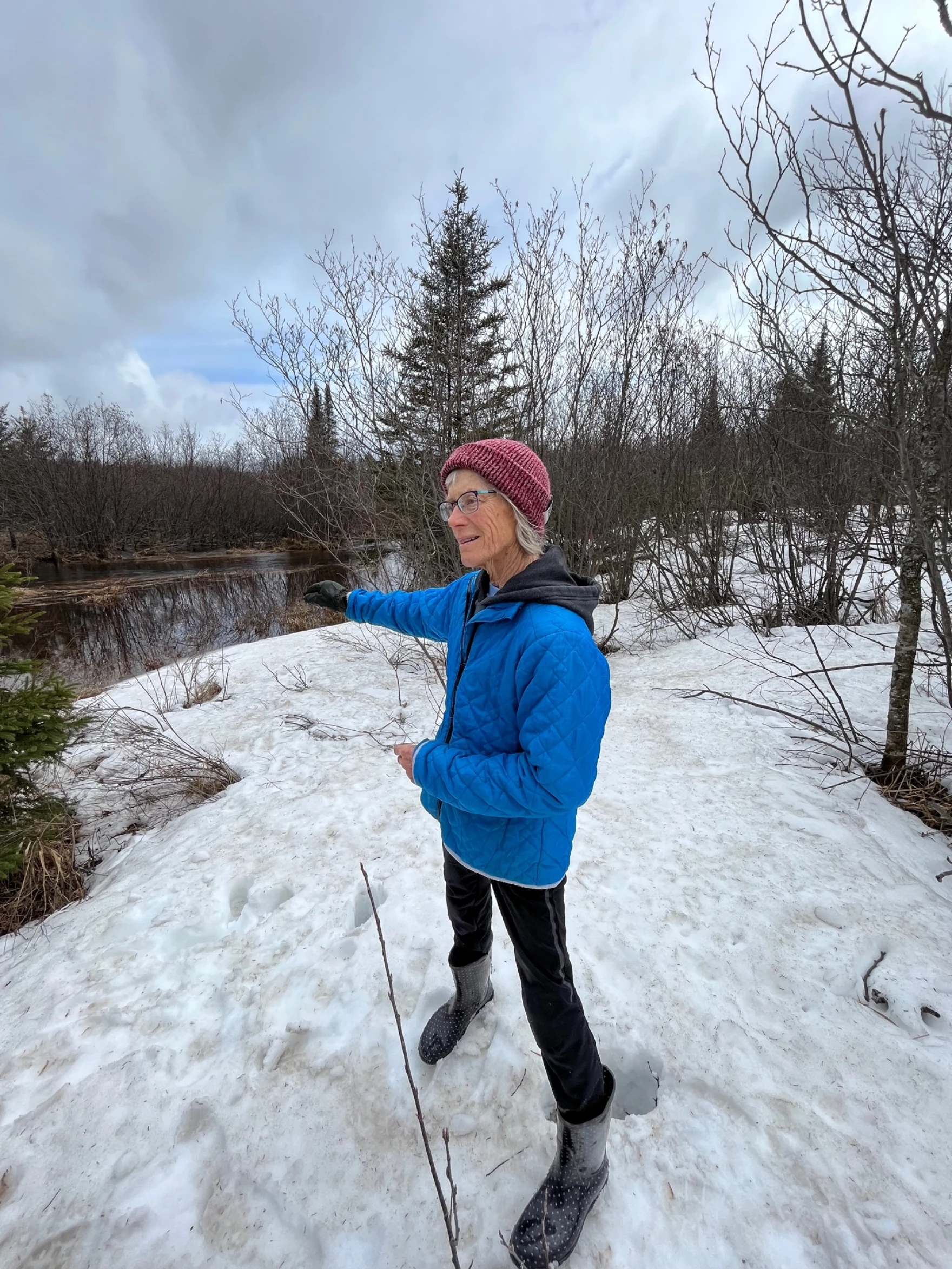
Shary Zoff stands near a blown-out beaver dam on the West Branch of the Knife River. (credit: Joe Friedrichs)
FRIEDRICHS: Shary Zoff is hopeful that beavers can continue to have a home in and around the Knife River. She’s a member of the grassroots organization called Advocates for the Knife River Watershed.
Zoff lives along the Knife River. She says there used to be a beaver dam there, but it came apart naturally in the late 90s.
SHARY ZOFF: And the beavers have tried to move back in. Unfortunately, my neighbor did let the trappers come in and trap them a few years ago.
FRIEDRICHS: She says since the DNR keeps trapping the beavers, this stretch of the Knife is less inviting. There was once a pond, but now a swath of tag alders and clusters of non-native reed canary grass grow by the river’s edge.
The Advocates of the Knife River Watershed say both the removal of beaver dams and forest clear cutting have led to increased erosion on the Knife. They say beaver dams can act like speed bumps in the river and help slow down the water as it moves through the watershed. That’s especially important as the climate changes and precipitation becomes more extreme, according to the group.
In contrast, officials from USDA Wildlife Services say “beaver dams are a major cause of habitat degradation in the streams that drain into Lake Superior, Lake Huron and Lake Michigan.”
And, of course, they say they’re bad for trout.
But new research shows it could be the exact opposite – that beavers might not be so bad for trout after all.
In 2018 and 2019, scientists at the University of Minnesota Duluth studied dams on a couple of rivers in the state, including the Knife. And, in those spots, they found that, during their study, dams didn’t necessarily block fish from migrating up and down the river.
Professor Karen Gran led the research team.
KAREN GRAN: So as long as water was able to get over the top of the dam at some point during that time period, the fish were able to move over the dam.

Research from the University of Minnesota Duluth shows that beavers might not be so bad for trout after all. (credit: Tom Koerner / USFWS)
FRIEDRICHS: In fact, they found essentially no difference in fish movement where there were dams and where there weren’t any.
Gran says the dams they studied also had another important function for fish, like steelhead, that thrive in cooler water.
GRAN: The dams are providing storage capacity, they’re holding water back so that it’s available later in the summer. And they’re also in some cases cooling the water down if it is seeping through the subsurface and coming up downstream. I think that’s all beneficial to species downstream.
FRIEDRICHS: It was a small, short-term study, and they didn’t look at spawning steelhead. Gran says more research is needed on that.
The study didn’t change the Minnesota DNR’s main goal – removing beavers and dams from key trout rivers – to make way for the fish. But the DNR did make some changes. Deserae Hendrickson says two years ago, they reduced the number of beaver dams they removed from the Knife River.
But, at least for now, they’re still killing beavers and remain in that state of compromise where few people are happy.
Catch more news at Great Lakes Now:
The Catch: Interlochen Public Radio podcast finds ‘[Un]Natural Selection’ in nature
Join Great Lakes Now on the Illinois-Indiana Sea Grant podcast
Featured image: States in the Great Lakes kill beavers and remove dams on select rivers and streams. They’re doing it, in part, for anglers and the multi-billion dollar fishing industry. But some people are not on board with that. (Robes Parrish / USFWS)
1 Comment
-
How have the Great Lakes been affected by climate change, and what is Great Lakes Now doing to address these issues?



